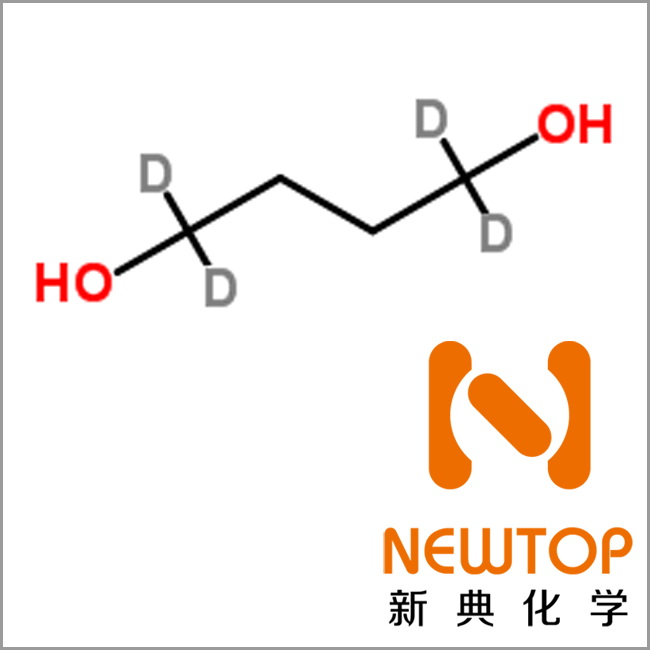1,4-Butanediol BDO CAS110-63-4
Overview:
Chinese name: 1,4-Butanediol (BDO)
Alias:Butylene glycol 4-butanediol 1,4-butanediol 4-Dihydroxybutane 1,4-dihydroxybutane
English Name:1,4-Butylene glycol~Tetramethylene glycol; tetramethylene glycol; 1,4-Butylene glycol; 75% 1,4-BUTANEDIOL; butane-1,4-diol; butane-1,1- diol
1,4-Butylene glycol (Butane-1,4-diol) is an organic substance with the molecular formula C4H10O2 and molecular weight 90.12. It is a colorless or light yellow oily liquid in appearance. Flammable, freezing point 20.1℃, refractive index 1.4461. soluble in methanol, ethanol, acetone, slightly soluble in ether. It is hygroscopic and has a bitter odor, but slightly sweet in the mouth.
Used as solvent and humidifier, also used in plasticizer, drug, polyester resin, polyurethane resin, etc.
Molecular formula(Formula): C₄HO₂
Molecular Weight(Molecular Weight): 90.12
CAS No.: 110-63-4
Product Name: Butanediol 4-butanediol 1,4-butanediol 4-Dihydroxybutane 1,4-dihydroxybutane
Molecular structure: See figure
Molecular formula: C₄HO₂
Molecular weight: 90.12
CAS No.: 110-63-4
EINECS No.: 203-786-5
MDL No. MFCD00002968

Physical and chemical properties:
Colorless, oily liquid, not easy to ignite. In contact with high heat, open flame or oxidizer, there is a risk of combustion.
Freezing point ≤19.0℃
Mass fraction of 1,4-butanediol≥99.5%
Bromine value ≤0.10%
Refractive index 1.445~1.446
Water content ≤0.10%
Hydroxyl value ≤0.2%
Chromaticity (platinum a cobalt color) ≤25
Preparation:
- Acetylene method: 1,4-butynediol is made by reacting acetylene and formaldehyde in the presence of Cu-Bi catalyst at 98kPa and 80-95℃. The latter is then catalyzed by nickel skeleton and hydrogenated at 1.372-2.06 MPa, 50-60°C to 1,4-butenedioate, followed by further catalytic hydrogenation with Ni-Cu-Mn/Al2O3 (13.7-20.6 MPa, 120-140°C) to 1,4-butanediol, which is then purified by distillation after removal of metal ions by ion exchange resin. 2. Maleic Anhydride Hydrogenation method 3. Butadiene method Acetyl oxidation reaction of 1,3-butadiene with acetic acid and oxygen to produce 1,4-diacetoxy-2-butene, then hydrogenated and hydrolyzed to make 4. 1,4-dichlorobutene method 1,4-dichlorobutene is an intermediate product of the process of producing chlorobutadiene from butadiene, which is used as raw material, hydrolyzed and hydrogenated to obtain 1,4-butanediol.
Uses:
1,4-butanediol is an important organic chemical and fine chemical raw material, and is the basic raw material for the production of polybutylene terephthalate (PBT) engineering plastics and PBT fiber; PBT plastic is one of the five most promising engineering plastics.
1,4 butanediol is the main raw material for the production of tetrahydrofuran, which is an important organic solvent. The polytetramethylene glycol ether (PTMEG) obtained after polymerization is the basic raw material for the production of high-elasticity spandex (Lycra fiber). Spandex is mainly used in the production of high-elasticity knitted products such as advanced sportswear and swimwear.
γ-butyrolactone, a downstream product of 1,4-butanediol, is the raw material for the production of 2-pyrrolidone and N-methylpyrrolidone products, from which a series of high value-added products such as vinylpyrrolidone and polyvinylpyrrolidone are derived, which are widely used in pesticides, pharmaceuticals and cosmetics.
Applications:
Used as solvent and humidifier, also used to make plasticizer, drugs, polyester resin, polyurethane resin, etc.
Storage and transportation:
Should be sealed and stored in a dry, cool and ventilated warehouse
Package:
200KG/drum Storage: It is recommended to store in dry and cool area with proper ventilation. Please fasten the lid as soon as possible after the original packaging to prevent the mixing of other substances such as water and other substances from affecting the product performance. Do not inhale dust and avoid skin and mucous membrane contact. Smoking, eating and drinking are prohibited in the workplace. After work, shower and change clothes. Store contaminated clothes separately and wash them before use. Maintain good hygiene habits.